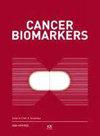对食管鳞状细胞癌 mRNA 表达谱的全面分析揭示了 Desmoglein 1 和关键基因组靶点的下调情况
IF 2.2
4区 医学
Q3 ONCOLOGY
引用次数: 0
摘要
目的:食管鳞状细胞癌(ESCC)是食管癌的一种组织学亚型,起病于食管的鳞状细胞。在确诊的 ESCC 患者中,只有 19% 的患者有五年生存率。因此,有必要为早期诊断、预后和缓解 ESCC 的潜在治疗目标确定高可信度的生物标志物。方法:我们对 10 个 mRNA 数据集进行了荟萃分析,确定了各项研究中一致受到干扰的基因。然后,与 ESCC ATLAS 集成,分离出 "核心 "基因,以确定导致基因-基因相互作用和分子信号通路失调的主要基因扰动事件的后果。此外,通过与毒物基因组学数据整合,推断基因与环境暴露、微量元素、化学致癌物和药物化学物质的相互作用。我们还利用癌症基因组图谱(The Cancer Genome Atlas)中的 ESCC 相关数据集,根据生存分析推断候选基因的临床结果。结果:我们发现了 237 个已知候选基因和 18 个新的受干扰候选基因。Desmoglein 1 (DSG1) 是我们在六个不同数据集中发现的 ESCC 中显著下调的基因之一(折叠变化 =-1.89,p 值 = 8.2e-06)。此外,我们还发现了 31 个 "核心 "基因(这些基因要么存在基因变异,要么受到表观遗传修饰的调控),并发现这些基因通过基因-基因相互作用网络中的相邻基因调控关键生物通路。功能富集分析表明,"细胞外基质"、"胶原修饰 "和 "人乳头瘤病毒感染 "等受调控的生物过程和通路在候选基因中的代表性明显偏高。根据比较毒物基因组学数据库(Comparative Toxicogenomics Database)的毒物基因组学推断,我们报告了与吸烟、锌、亚硝基苄基甲胺等风险因素以及顺铂、氟尿嘧啶和丝裂霉素等药物化学物质相互作用而导致 ESCC 的关键基因。我们还指出,STC2 基因显示出 ESCC 患者的高死亡率风险。结论:我们发现了与 ESCC 有关的新型受干扰基因,并探索了它们之间的相互作用网络。DSG1 就是其中的一个基因,它与微生物群的关联以及 ESCC 常见的临床表现提示它是早期诊断标志物的良好候选基因。此外,本研究还强调了候选基因及其与风险因素、生物通路、药物化学成分和 ESCC 患者生存概率之间的分子联系。本文章由计算机程序翻译,如有差异,请以英文原文为准。
A comprehensive analysis of mRNA expression profiles of Esophageal Squamous Cell Carcinoma reveals downregulation of Desmoglein 1 and crucial genomic targets
AIM: Esophageal Squamous Cell Carcinoma (ESCC) is a histological subtype of esophageal cancer that begins in the squamous cells in the esophagus. In only 19% of the ESCC-diagnosed patients, a five-year survival rate has been seen. This necessitates the identification of high-confidence biomarkers for early diagnosis, prognosis, and potential therapeutic targets for the mitigation of ESCC. METHOD: We performed a meta-analysis of 10 mRNA datasets and identified consistently perturbed genes across the studies. Then, integrated with ESCC ATLAS to segregate ‘core’ genes to identify consequences of primary gene perturbation events leading to gene-gene interactions and dysregulated molecular signaling pathways. Further, by integrating with toxicogenomics data, inferences were drawn for gene interaction with environmental exposures, trace elements, chemical carcinogens, and drug chemicals. We also deduce the clinical outcomes of candidate genes based on survival analysis using the ESCC related dataset in The Cancer Genome Atlas. RESULT: We identified 237 known and 18 novel perturbed candidate genes. Desmoglein 1 (DSG1) is one such gene that we found significantly downregulated (Fold Change =-1.89, p-value = 8.2e-06) in ESCC across six different datasets. Further, we identified 31 ‘core’ genes (that either harbor genetic variants or are regulated by epigenetic modifications) and found regulating key biological pathways via adjoining genes in gene-gene interaction networks. Functional enrichment analysis showed dysregulated biological processes and pathways including “Extracellular matrix”, “Collagen trimmer” and “HPV infection” are significantly overrepresented in our candidate genes. Based on the toxicogenomic inferences from Comparative Toxicogenomics Database we report the key genes that interacted with risk factors such as tobacco smoking, zinc, nitroso benzylmethylamine, and drug chemicals such as cisplatin, Fluorouracil, and Mitomycin in relation to ESCC. We also point to the STC2 gene that shows a high risk for mortality in ESCC patients. CONCLUSION: We identified novel perturbed genes in relation to ESCC and explored their interaction network. DSG1 is one such gene, its association with microbiota and a clinical presentation seen commonly with ESCC hints that it is a good candidate for early diagnostic marker. Besides, in this study we highlight candidate genes and their molecular connections to risk factors, biological pathways, drug chemicals, and the survival probability of ESCC patients.
求助全文
通过发布文献求助,成功后即可免费获取论文全文。
去求助
来源期刊

Cancer Biomarkers
ONCOLOGY-
CiteScore
5.20
自引率
3.20%
发文量
195
审稿时长
3 months
期刊介绍:
Concentrating on molecular biomarkers in cancer research, Cancer Biomarkers publishes original research findings (and reviews solicited by the editor) on the subject of the identification of markers associated with the disease processes whether or not they are an integral part of the pathological lesion.
The disease markers may include, but are not limited to, genomic, epigenomic, proteomics, cellular and morphologic, and genetic factors predisposing to the disease or indicating the occurrence of the disease. Manuscripts on these factors or biomarkers, either in altered forms, abnormal concentrations or with abnormal tissue distribution leading to disease causation will be accepted.
 求助内容:
求助内容: 应助结果提醒方式:
应助结果提醒方式:


